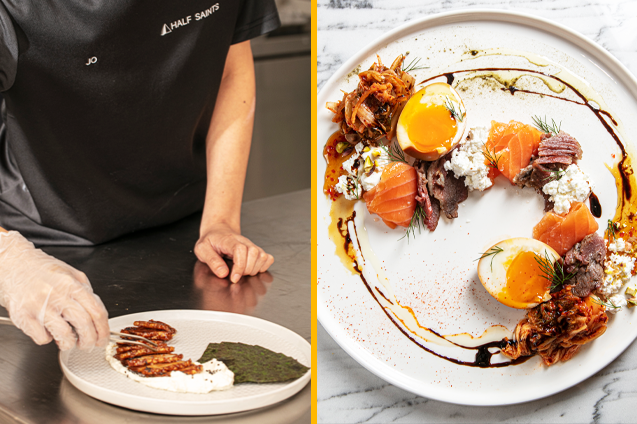When the lockdown was announced in March last year, Christine Roque and Jo Arciaga of Half Saints had the difficult task of reengineering their menu. It was difficult because their current menu symbolized their success.
It was tried and tested and gave them a full house every night. But some items on the menu that did well within a dine-in setting didn’t translate well in microwavable containers for takeout or delivery.
“We felt decapitated,” says Roque. “But it was also empowering because we had to go back to R&D and we had to experiment. Every week we would have two to three-hour huddles and study how customers ordered.”
For Half Saints, fun is essential
When they noticed more and more customers ordering extra brioche bread, which was originally only part of their Eggs Benedict, they realized that there was an interest and demand for pastries. They started what was called their Afternoon Bakes, which saw weekly releases of new products. “Let’s just do whatever we want. We’ve already lost so much, we might as well have fun doing it!” recalls Roque.
“We [were] having fun, but what people [didn’t] see [was] the rigorous R&D behind every release,” adds Arciaga, head chef of Half Saints.
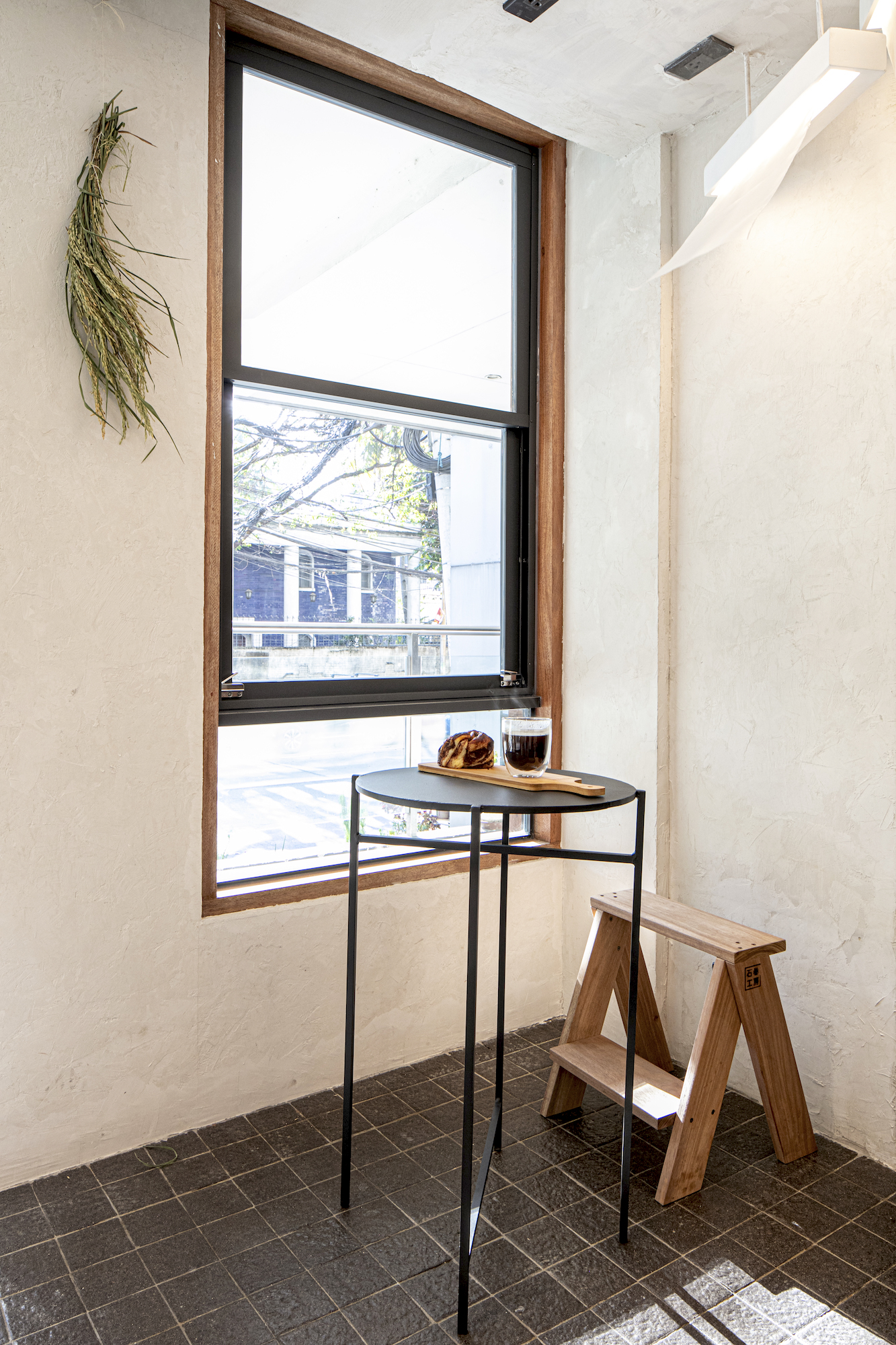
As they saw this trend with pastries grow, Half Saints acquired the space next door and turned it into a bakery. Tapping longtime collaborator architect Arts Serrano of One/Zero Design to design the interiors, Roque and Arciaga wanted the space to be inspired by the pastry they thought represented them most: Merci Buko.
The Merci Buko is a choux au craquelin (basically a cream puff with a crispy and cracked top) filled with a smooth, coconut custard and strips of young, silky coconut meat. The pastry then gets a crown of roasted pili from a grower in Albay, Bicol.
The Merci Buko is a choux au craquelin (basically a cream puff with a crispy and cracked top) filled with a smooth, coconut custard and strips of young, silky coconut meat. The pastry then gets a crown of roasted pili from a grower in Albay, Bicol. The coconut meat is bought from a street vendor that passes by the restaurant along Sgt. Esguerra Ave. with a cart full of coconuts.
The bakery embodies all these elements: white strips of organdy silk hanging from the light fixtures evoke young coconut meat, the bar’s texture is akin to the surface as the choux, and the cobblestone floor illustrates the pili nuts.

Lessening waste
One way to protect your profits while running a restaurant is to find ways to lessen waste and to prolong the lives of ingredients. While Merci Buko was gaining popularity, Roque and Arciaga realized that they wanted to use all the coconut water instead of having it go to waste.
So they developed a Crema de Fruta cake and used coconut water in the gelatin. They also added calamansi liqueur into the gelatin as the bottles behind the bar weren’t seeing much use at the moment.

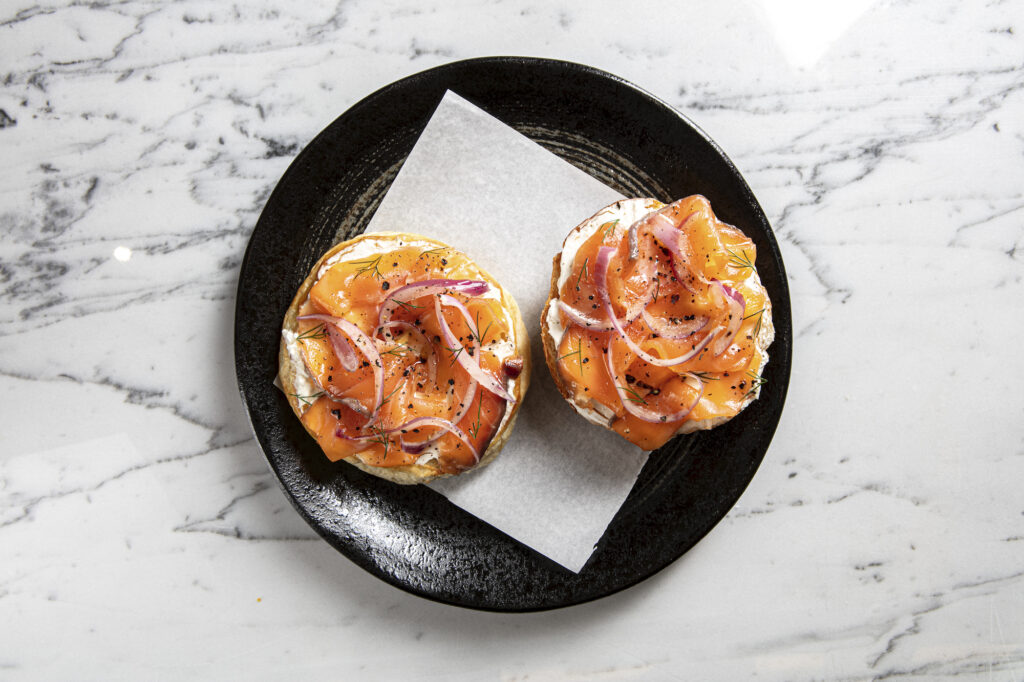
The Half Saints team also saw it pertinent to start curing some of their ingredients to lengthen their shelf lives. Items such as paneer, gravlax, kimchi, corned beef, and soy sauce eggs found their way on the “Curing Room Gourmand” list of the menu.
“We did the Curing Room Gourmand because we didn’t want to waste any ingredients. Plus, anything you cure is bursting with umami,” Roque says.

Serving size matters
Pay attention to consumer habits and you’ll see that not everyone is in need of party platters. Many who find themselves living independently would rather order a single serving of a dessert or dish. This was also a lesson that Roque saw with their award-winning 64% Auro Dark Chocolate Tart.
Pre-pandemic, when you would order this, it would be a slice from the nine-inch tart served with whipped cream and Himalayan pink salt. They then developed affordable tartlet versions, which are sold in three pieces.
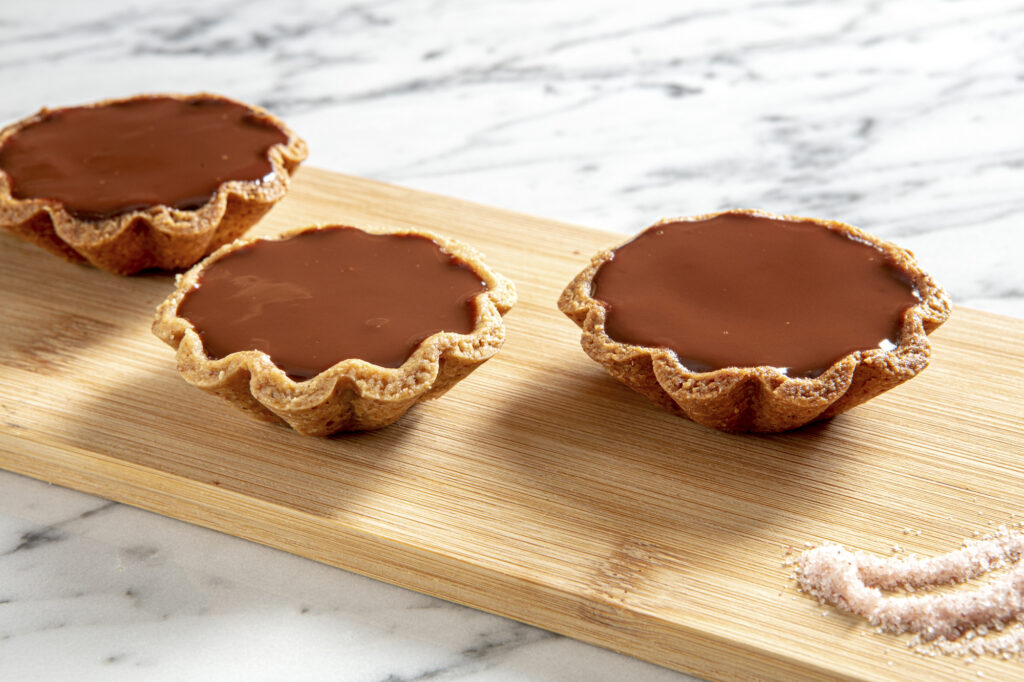

“When we released it, we didn’t think people would buy it. But when we did, Nolisoli shared it, and we had so many pre-orders,” recalls Roque.
Their Chocolate Overload Babka also comes as a single serving. “If you look at all the babkas available around the metro, they are all offered as a loaf. And we are the only ones doing the solo-sized babka. Considering how people are confined in a space, they don’t need a loaf,” says Roque. “It’s a deliberate and strategic decision to make things smaller.”
Their Crema de Fruta also started out in mini size, recreated only in a bigger size after people requested it.
“We were able to develop dishes because we knew who we were serving. So we didn’t bother anymore with ube cheese pandesal even though it was such a big hit at the time because it wasn’t what our market was looking for from us,” says Christine Roque.
Know who you’re serving
Whether it is hearing from a customer that they didn’t enjoy something from your menu or noticing that another item gets sold out almost instantly, there’s always something to learn from your customers and their behavior.
If you developed risotto and believe it is best experienced and enjoyed within five minutes from plating, then it is a disservice offering it in a microwavable container to travel across the city to your customer.

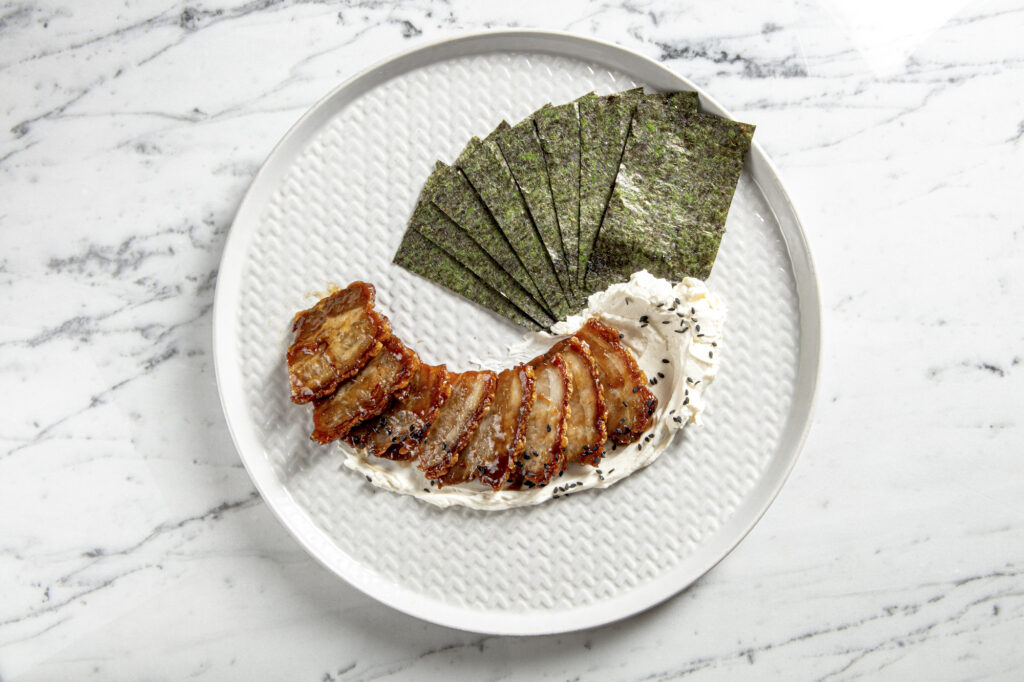
Arciaga observes the following: “We noticed that people kept ordering items with Filipino flavors like the Crema de Fruta, Merci Buko, and Ube Overload Babka. Anything that the Filipinos can relate to or can be familiar with, it’s a good starting point.”
“Connecting to what Jo said, it’s also knowing who you’re serving, your market,” says Roque. “We were able to develop dishes because we knew who we were serving. So we didn’t bother anymore with ube cheese pandesal even though it was such a big hit at the time because it wasn’t what our market was looking for from us.”
As in any business, there is value in keeping an eye out on trends. But as Half Saints shows, a larger impact can be made by listening to customers, staying committed to your values, and enjoying the process.





